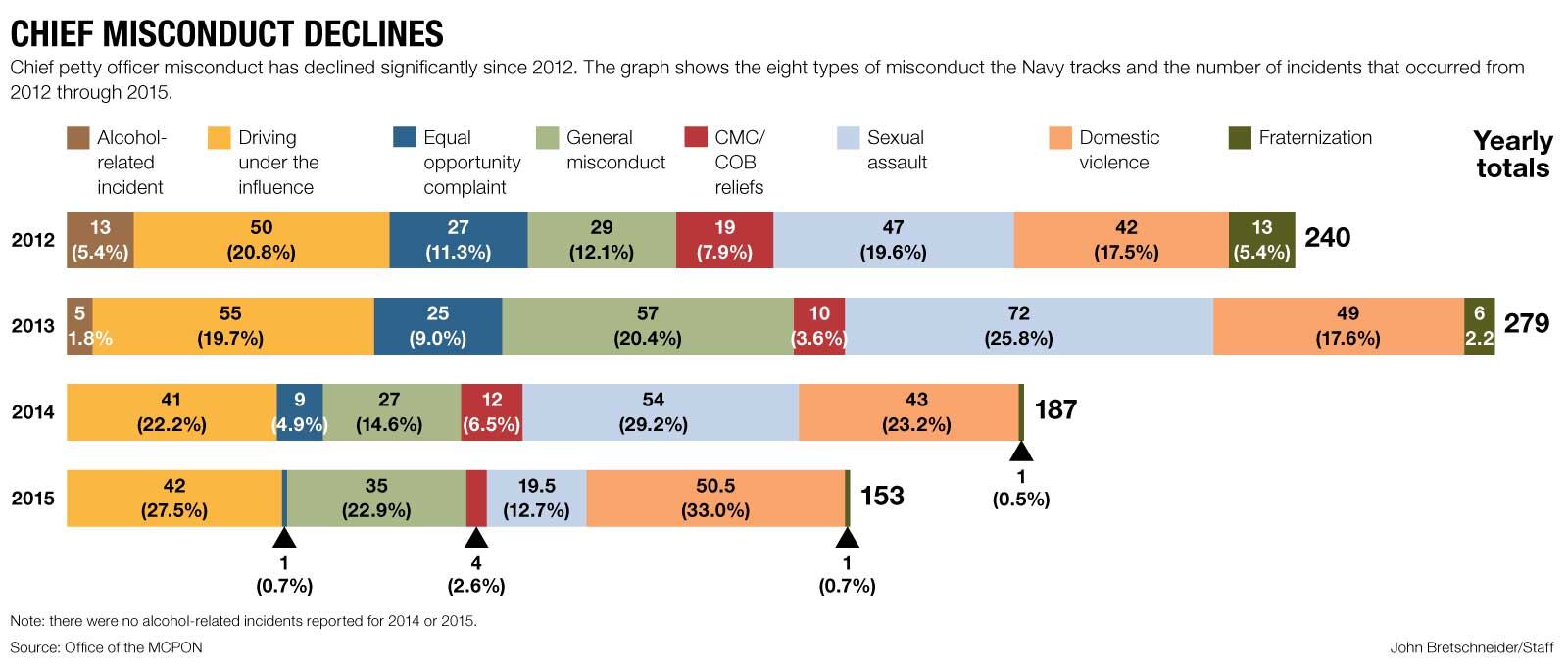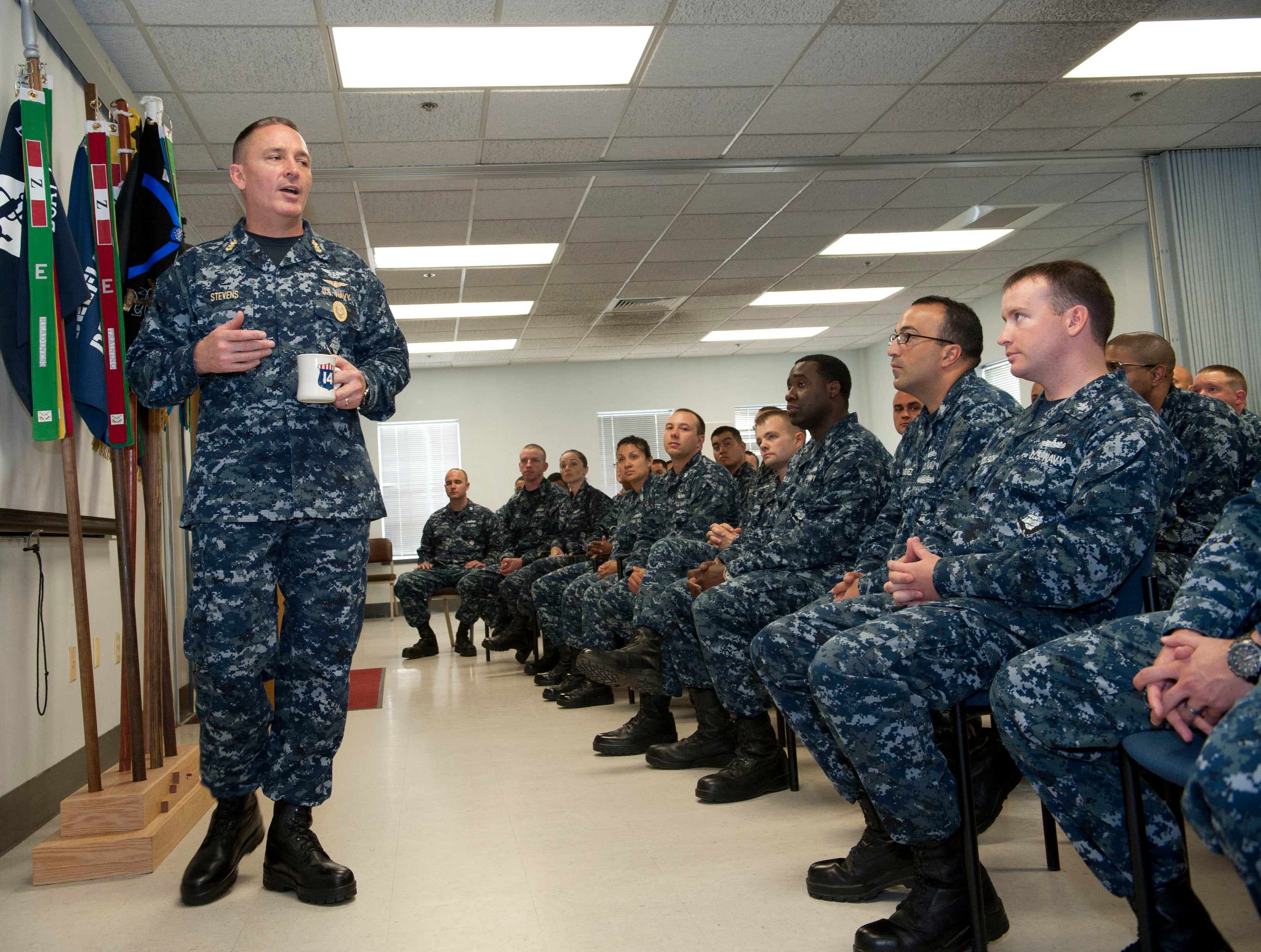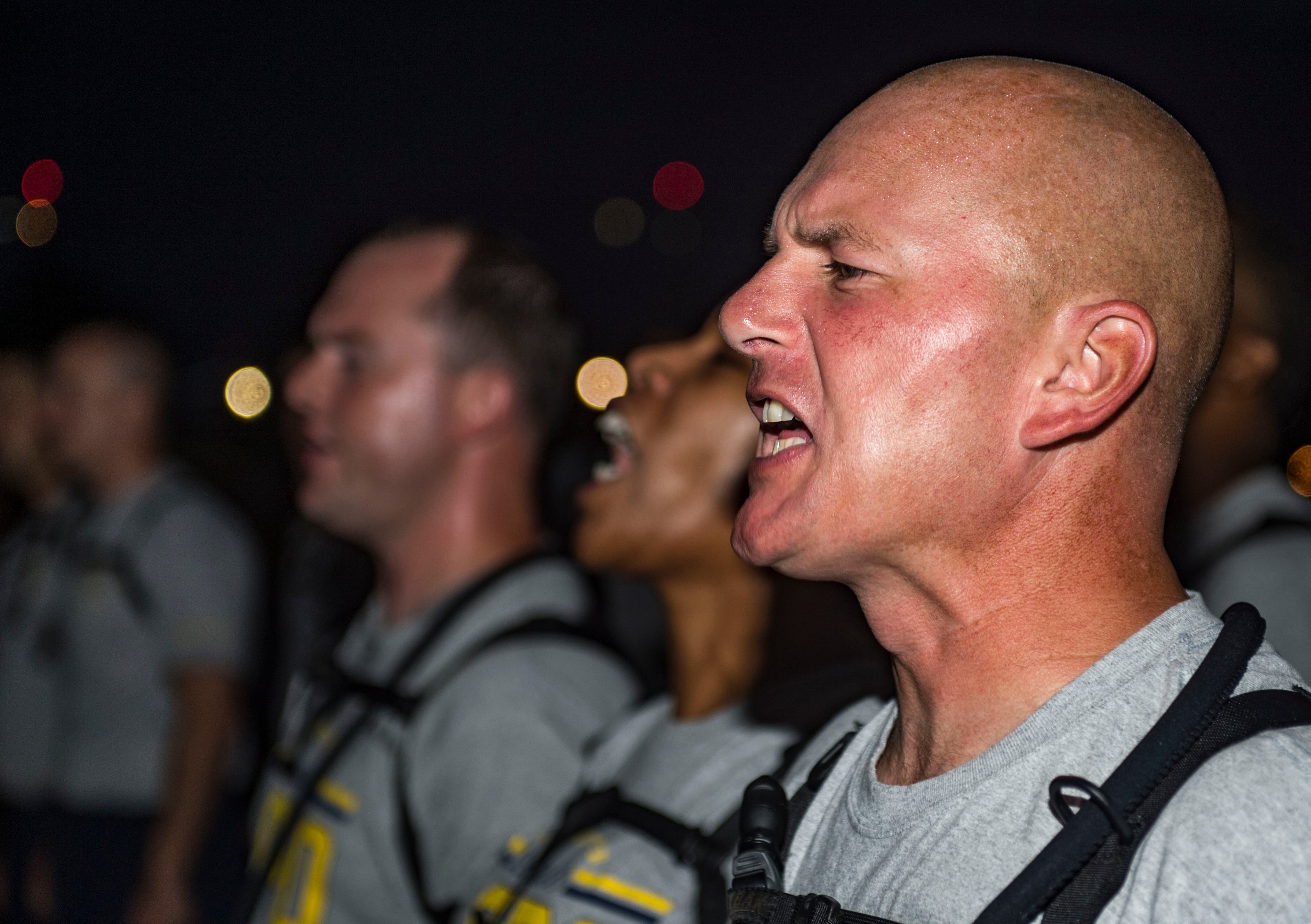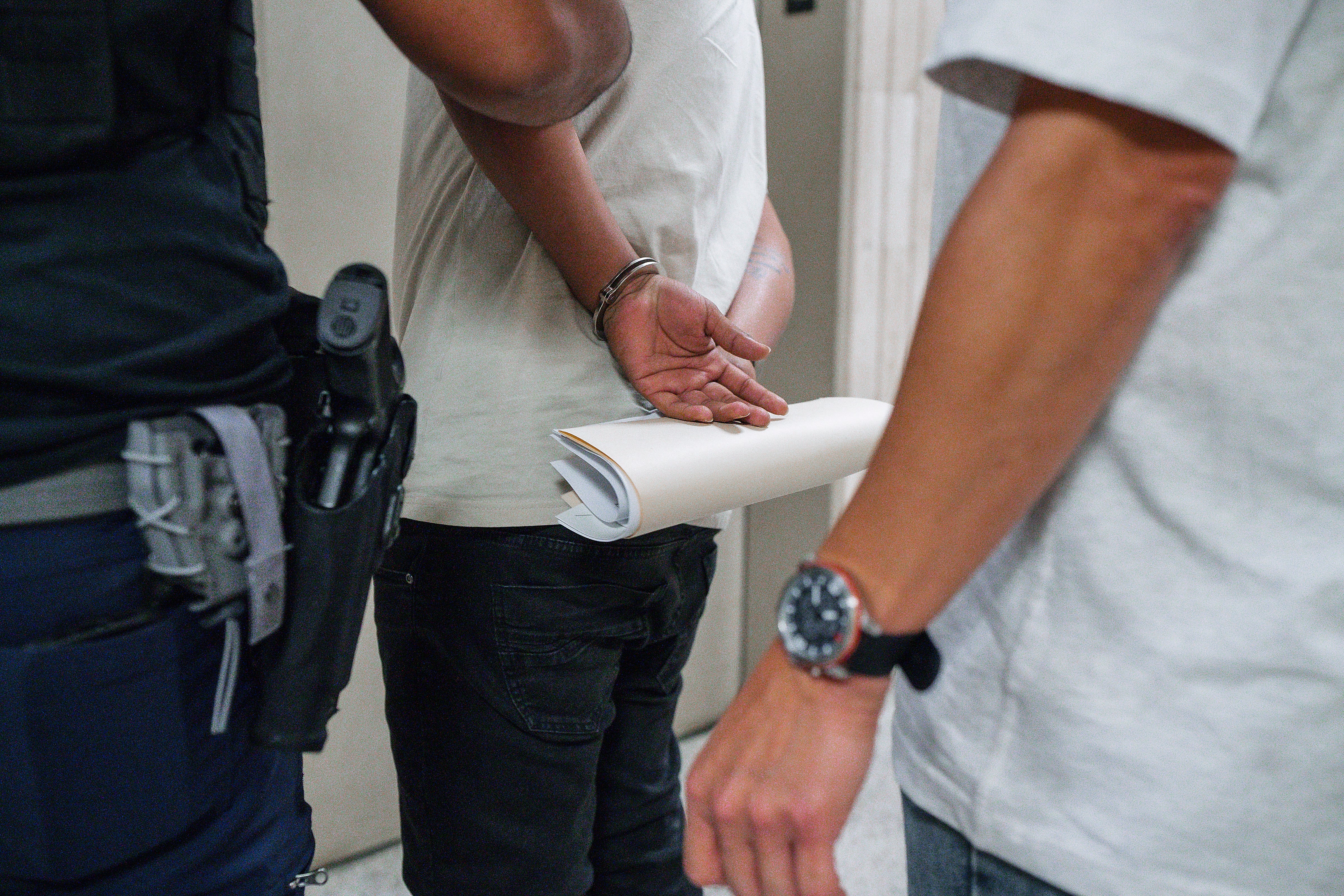Among sailors, especially old salts, There's
Though that hard as nails, hard-working and hard drinking chief makes for good stories, the reality of that anecdote now seems to be rapidly moving into the wake and historical lore of the Navy.
That's a message the chief's mess has heard loud and clear. Seven years after misconduct was damaging the mess' reputation, they've managed to turn things around. Alcohol incidents have dropped. Misconduct cases are fewer. And new training and mess input is helping chiefs attain a higher level of esteem and professionalism at a time they're needed more than ever. things can end careers and fast.But what seems to be ending, or at least waning, is the numbers of chief’s sailing into their own, personal harm’s way.
According to Master Chief Petty Officer of the Navy (AW/NAC) Mike Stevens — who tracks senior enlisted misconduct in real-time through reports from his fleet and force master chiefs - bad behavior among the Navy's enlisted leadership — to include command master chief' reliefs is on the decline.
What's emerging is much more professional overall chief's mess brought on by half a decade focus on year-round training of first class petty officers that focuses on making good decisions, setting a top example and taking car of your sailors.
"We've been tracking CPO misconduct over the past five years and it's encouraging to know that we've seen a 30 percent reduction in CPO misconduct throughout the Navy, and that it is continuing to decline," Master Chief Petty Officer of the Navy (AW/NAC) Mike Stevens said in a Jan. 29 interview. "What hundreds of chiefs have shared with me about the reason for this decline is that it has been the focus on year-round training, and specifically CPO-365, that has led to this reduction in misconduct."
Stevens said while the actions of a few can paint a negative picture of the entire mess, he is proud that 98 percent of the Navy's 30,000 chiefs have and continue to do the right things every day.

been
1. Getting results. The chief crackdown began seven years ago, when But todays’s numbers area far cry from 2009, when then-MCPON (SS/SW) Rick West sent a shot across the bow of the Navy’s collective chief’s mess. Misconduct was rising and sailors had the perception that chiefs were "untouchable," he said.
There was an opinion, he told to Navy Times in a 2010 interview, among sailors on the deckplates that chiefs were "untouchable" and by and large got away with misconduct both on and off the job, while the rank and file paid the price when they screwed up.
West started monitoring senior enlisted conduct issues in 2009 and by March, 2011, it was clear he had to take action.
From 2009, when West began monitoring conduct issues, to March 2011, he tallied At that point, his tracking showed that chiefs had been involved in 248 cases of misconduct, including drunken driving, sex assault, fraternization and domestic violence. Indeed, drunken driving incidents rose from 51 in 2009 to 69 in 2010 — including a command master chief and a submarine's chief of the boat.
Drunken-driving incidents rose from 51 in 2009 to 69 in 2010 and by March 3, 2011 were on pace for another record breaking year with 14 chiefs already busted for drunken driving - including a command master chief and a submarine's chief of the boat.
West was fed up and decided to draw a line in sand — shape up or ship out.
"I want the CPOs to know that we have put things in place this past year that, if you do steer the wrong course, you might need to go find another job," West said in a March 3, 2011 interview.
"We have monitored CPO misconduct over the course of 2010, and our findings are unacceptable and in need of your immediate attention," West wrote in an official message to commanders and command master chiefs alike.
2. The mess got aboard.

MCPON Mike Stevens has made a point of seeking ways to improve training from his chiefs during visits around the fleet. He held a training session in July with the crew of the stealth destroyer Zumwalt.
Photo Credit: MC1 Martin L. Carey/U.S. Navy
The reaction from the mess was strong and proactiveositive, with many fed up that so much misconduct was tarnishing the image of the chief.
"What I hear when I'm out talking to the chiefs' messes is they have no issue whatsoever with the Navy and MCPON taking this position," said then-Fleet Master Chief Stevens in a November 2010 interview.
Junior sailors also gave this the thumbs up, saying the crackdown was was long overdue.
"The sailors out there believe that we need to be holding each other accountable, and when you cannot hold the standard, you've lost your place in the Navy, and it's time to seek employment elsewhere," Stevens said in the 2010 interview.
Stevens and then CNP Fleet Master Chief (AW/SW/SCW) Scott Benning were tasked to find a way to reduce the misconduct numbers. During their travels, Stevens and Benning pulsed the mess and came up with out of this effort that the year-round CPO 365 training was born, focusing on constant training of first class petty officers instead of a six-week crash course that had traditionally been given once chief’s selections were announced in late summer each year.
Many commands were already doing this kind of training on their own and felt it was successful in helping first class petty officers make the transition - and provided a constant platform to constantly stress standards and the enforcement of them, a mandate that's been with CPO's since the paygrade was created in the 1890's.
3. Finding solutions. Stevens and his fleet and force master chiefs began to analyze the 60 or so instances of misconduct by chiefs that were reported every three months. They found that it was the newest chiefs who were getting in trouble. While CPO-365 matured in the years since, the tracking of senior enlisted misconduct continued.
Over the 56 months that spanned from 2009 until the end of 2013, Stevens said the Navy was averaging 60 documented CPO misconducts per quarter.
The majority of the misconduct was committed by E-7s with four years or less as a chief, suggesting that they weren't taking their new-found responsibility seriously. Stevens, his fleet and force master chiefs and also his staff evaluated the data and found the majority of misconduct occured among E-7’s and particularly those with four or less years in the mess.
Stevens believes that the year-round grooming of first classes via CPO-365 has been a big driver in reducing misconduct by as much as 30 percent.
"Towards the end of 2013 we began to see the average decreasing," Stevens said. "It wasn't a large drop, but more like sea change."
4. A better mess.

Chief season training has been overhauled to be year-round and more professionally relevant, while still demanding. Here, chief selectees recite the Sailor's Creed in August.
Photo Credit: MC2 Edward Guttierrez III/U.S.Navy
The numbers continued to drop, prompting the MCPON to ask his master chiefs about what was driving the improvement.
Quietly MCPON watched the numbers as they continued to decline. He got curious as to the exact reasons — though he had his suspicions.
"Over the past 16 months we have now seen 30 percent decrease in CPO misconduct," Stevens told Navy Times in a Jan. 29 interview. "I went out with a message to my mess asking for feedback as to why our chiefs think we're getting better."
Stevens said he got over 100 replies and continues to hear feedback on his trips to the fleet.
"The vast majority of those replies, the number one thing, was that [the mess] believes that CPO 365 has begun to change the culture within the CPO mess."
More year-round mentorship and molding. Fewer shenanigans.
What has happened, Stevens said, is that the mess evolved so that every training event centered on professionalism and relevance. Old rituals that were similar to fraternity hazing or involving demeaning acts were jettisoned. New training was physically demanding but still humbling for the selectee, chiefs who have gone through it said. an evolution has occured, a necessary one and that CPO's have adapted to the Navy and sailors they're serving and the times they're serving in.
"Our CPO Mess has taken excellence to a new level," Stevens told the mess in a letter, a copy of which Navy Times obtained. which he declined to share officially with Navy Times, though his office confirmed as valid a copy independently obtained.
"We have never had a more professional and technically competent CPO Mess than we have today. DO NOT let anyone tell you any different."
Still, Stevens made a point to not judge the rituals of the past, saying they suited their times. Stevens made a point in an aside that he’s not judging chief’s from before — they served the Navy of their time and their cultures matched the times, too.
"Legacy is the lantern that lights the path for others to follow -- you don’t get where you are today without somebody having lit the path before you," Stevens said. "So "When I look at the chief petty officers that served before, those who lit the path when I was a young chief, these were remarkable leaders doing great things and did very well during the time that they served."
5. More work to do.

The new CPO-365 training may be professional, but it isn't easier. Here, two chief selectees crawl beneath wire at a 2013 training event held at Camp Blanding Joint Training Center, Florida.
Photo Credit: AWOCS Craig Hert/U.S. Navy
When then MCPON West started down this road in 2009, one thing that really stuck in his craw was the rash of chiefs being arrested for drunk driving under the influence of alcohol, It was, he said, saying at the time that it was "not only unacceptable, but also completely avoidable."
"We're not talking about performance in their jobs," he said. "We're talking about judgment calls that they make that steer them on the wrong course."
Even with all the improvement and a decline overall in alcohol-related incidents, DUI arrests remain a problem. Stevens said "we still have some work to do in that area.
Chiefs reported for DUI have dropped from the 2010 high of 70. In 2015, there were 42., on the other hand remains a stubborn problem and actually increased from 41 in 2014 to 42 in 2015 — but is still far lower than nearly 70 arrests in 2010 with an average of 47 annually since 2012.
Stevens says the decline is a good start, but he'd like to see this, too, drop to zero.
Opportunities to move into the goat locker remain strong. Last year, 24 percent of eligible first classes got the nod, hovering right around the 10-year average.
6. Continuing effort. This effort will continue and it's up to chiefs — current, future and retired — to find more ways to improve it. Stevens' goal is to continue driving down the tally of chiefs whose careers are wrecked over drinking and poor judgment. uestion now, he said is to sustain this effort.
"So you strive for zero," Stevens said in a recent told Navy Times in a Jan. 14 interview. "You can’t do this overnight. It has just got to be built into our culture. We will continue to work on this and look for ways to get better."
But he’s not sitting still. Already, He’s tasked his fleet and force master chief's to to look at CPO-365 around the fleet with an eye to identify what’s being done right and what needs to improve.
He stresses that this isn’t a new effort, either as he’s long been an advocate for deckplate leaders to improve the training inside their own lifelines, keeping it each year to keep it interesting and relevant.
7. Building the new chief
Each year, he says, should naturally build on the last and his plan is to release new guidance by mid-year.
But he also hopes this "sea change" in the mess continues. It’s something he believes comes as part of culture changes, both in and out of the service, something that’s repeated it self many times in the last century and a quarter. Stevens believes the year-round mentoring, heightened professionalism and the focus on disclosing chief misconduct has instilled a 21st Century chief's mess — competent, can-do leaders who steer their sailors right.
"This process is helping to create what I call a quiet humble servant leader," Stevens said. "But you need to understand that being quiet doesn't mean you don't communicate."
Stevens says that the success of his mess depends on them communicating among themselves and up and down the chain of command.
"What it means is that you are not talking about yourself or talking to draw attention to yourself," he said. "It means that your actions are speaking louder than your words and you are rolling up your sleeves and working hard."
And it has more benefits than just getting the job done, he added. He also wants his chief’s to be humble in how they go about their business, too. It doesn’t mean you think less of yourself, it means is you think more of others is our people we serve, not ourselves."
And that's where the year round training comes in, he says.
"CPO 365, the training, the concept behind it, I believe it helping to develop that chief petty officer into this quiet, humble servant leader," Stevens said. "We found this type of leader has less of a propensity to do things they should not be doing. They are more focused — you can’t argue with the results."
Use the magnifying glass below to zoom in on the chart:
Mark D. Faram is a former reporter for Navy Times. He was a senior writer covering personnel, cultural and historical issues. A nine-year active duty Navy veteran, Faram served from 1978 to 1987 as a Navy Diver and photographer.





